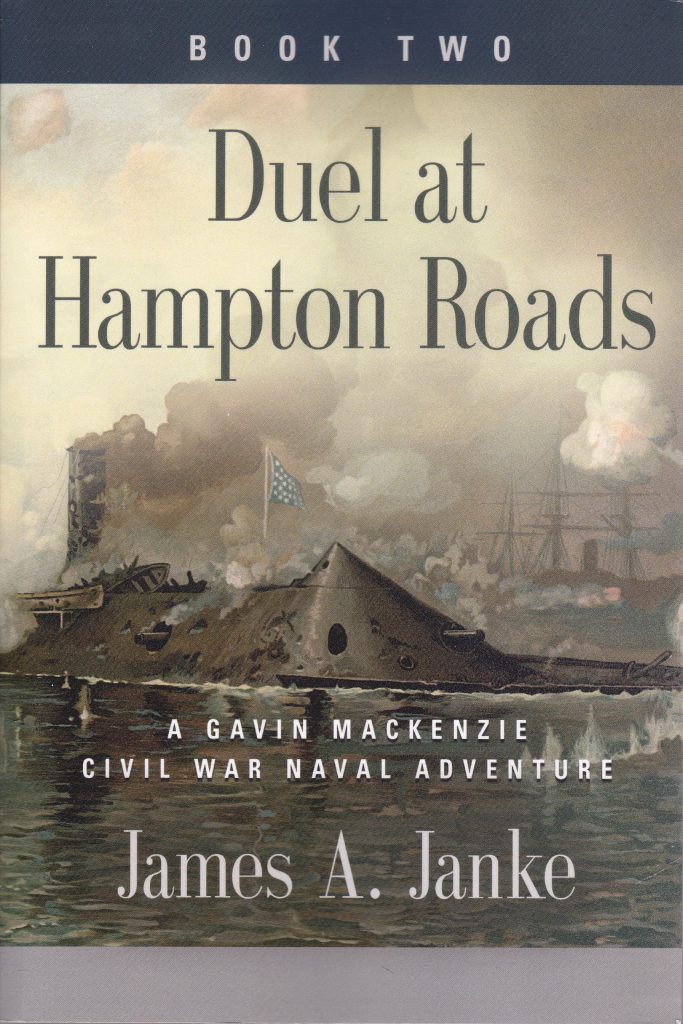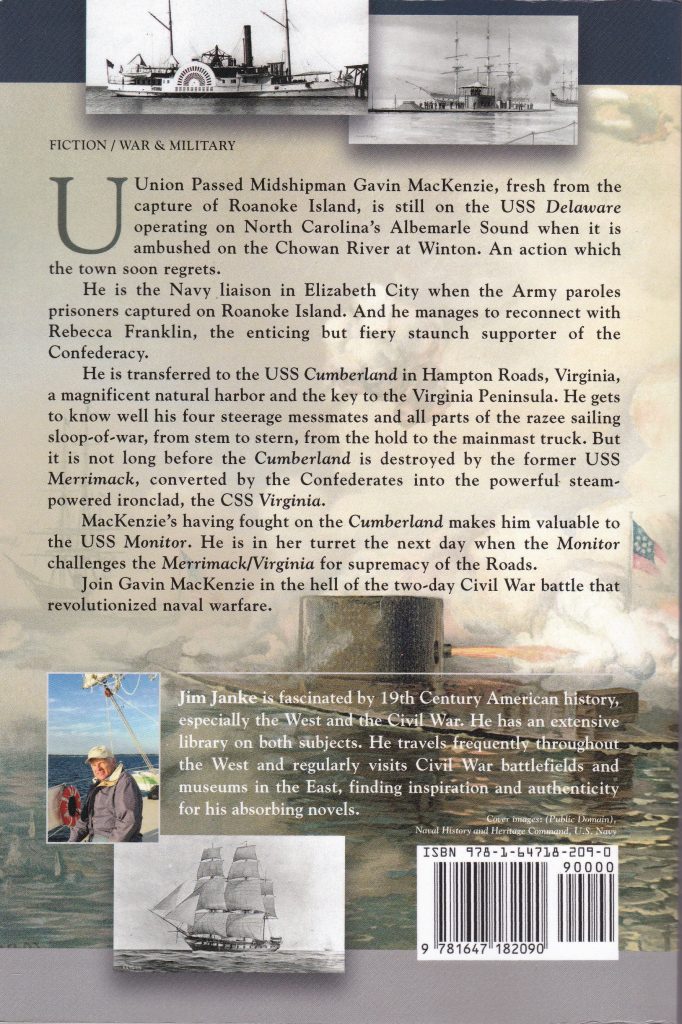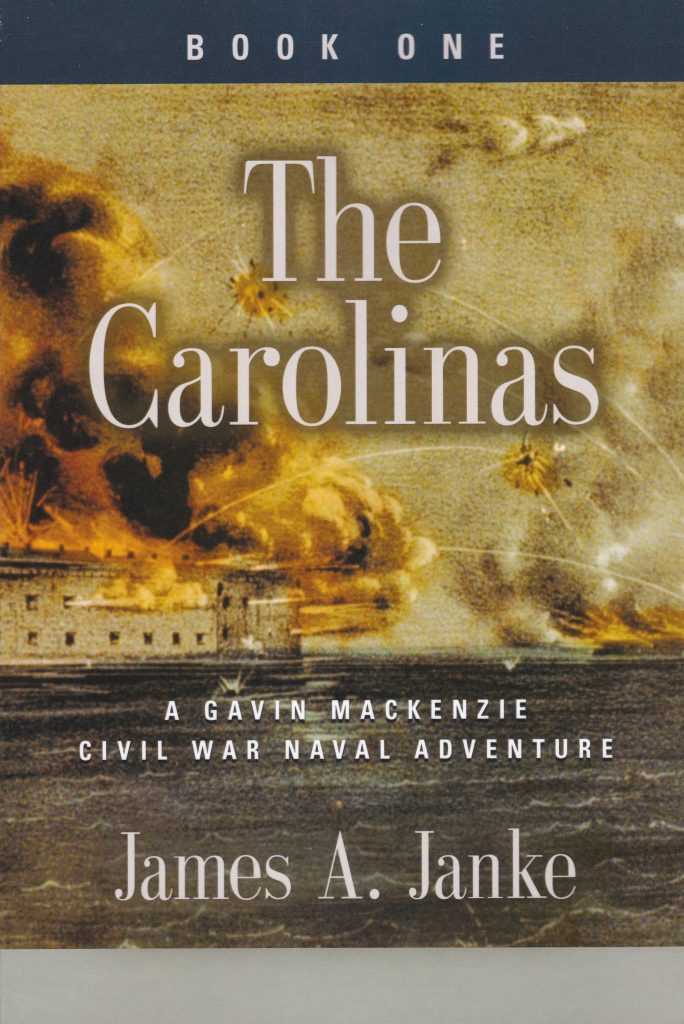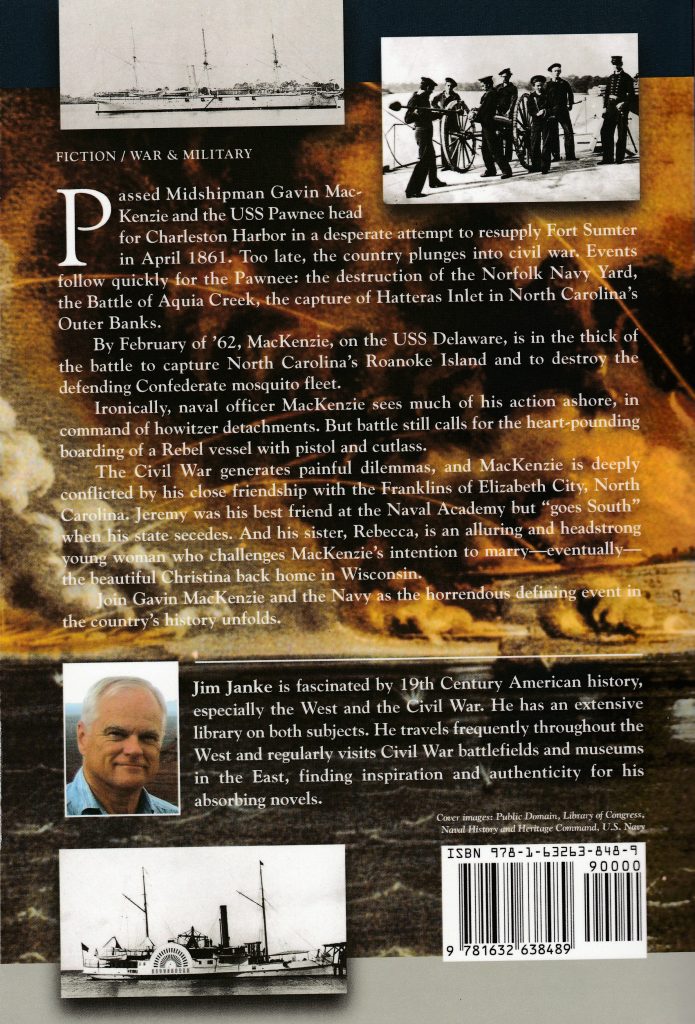

The Story
Union Passed Midshipman Gavin MacKenzie, fresh from the capture of Roanoke Island, is still on the USS Delaware operating on North Carolina’s Albemarle Sound when it is ambushed on the Chowan River at Winton. An action which the town soon regrets.
He is the Navy liaison in Elizabeth City when the Army paroles prisoners captured on Roanoke Island. And he manages to reconnect with Rebecca Franklin, the enticing but fiery staunch supporter of the Confederacy.
He is transferred to the USS Cumberland in Hampton Roads, Virginia, a magnificent natural harbor and the key to the Virginia Peninsula. He gets to know well his four steerage messmates and all parts of the razee sailing sloop-of-war, from stem to stern, from the hold to the mainmast truck. But it is not long before the Cumberland is destroyed by the former USS Merrimack, converted by the Confederates into the powerful steam-powered ironclad, the CSS Virginia.
MacKenzie’s having fought on the Cumberland makes him valuable to the USS Monitor. He is in her turret the next day when the Monitor challenges the Merrimack/Virginia for supremacy of the Roads.
Join Gavin MacKenzie in the hell of the two-day Civil War battle that revolutionized naval warfare.
The Battle and My Focus
The two-day Civil War battle on March 8-9, 1862 in Hampton Roads, Virginia, radically changed naval warfare forever. There is no more famous naval battle than that between the two ironclads, the Union USS Monitor and the Confederate CSS Virginia (the former USS Merrimack) on March 9. But my novel focuses more on the battle of the day before, March 8, between the Merrimack (even the Confederates rarely referred to the vessel as the Virginia) and the wooden sailing warship USS Cumberland, which was easily destroyed by the Confederate ironclad. It was that day’s battle that demonstrated that all the world’s fleets of wooden warships were suddenly and completely obsolete.
Writing about the Civil War navies takes a prodigious amount of research, but luckily the research is as much fun as the writing, if not more so. For the Cumberland I consulted various published accounts of the battle, officers’ memoirs, newspaper accounts, muster rolls, government reports and descriptions, salvage reports, and ship’s plans. Delightful, fascinating stuff!
Now, I put MacKenzie in the turret of the Monitor on March 9 during her battle with the Merrimack, but first join him on the Cumberland. Learn a lot about the ship and her officers and men; it personalizes the battle on March 8 when MacKenzie and the Cumberland face the new monster Rebel ironclad. Grab hold of something and hang on!
What is a Passed Midshipman?
I’ve been asked what a “passed midshipman” was. It was a naval rank like any other, equivalent to an Army second lieutenant. At the beginning of the Civil War, students at the Naval Academy were called cadets. They were commissioned as midshipmen, equivalent to an Army third lieutenant, but the U.S. Army had none. (The Confederate Army apparently did.) After some time in grade and passing an appropriate exam, they were promoted to passed midshipmen. They then progressed through the rank of master (Army first lieutenant) to the rank of lieutenant (Army captain). It was much later that cadets were called midshipmen and commissioned as ensigns. Then promoted through lieutenant, junior grade, to lieutenant.
Order your trade paperback copy at:
Amazon
Barnes & Noble
BookLocker
or at your local bookstore.
Order your inexpensive e-book copy at:
Amazon
Barnes & Noble
iBooks
Kobo
BookLocker
Book Two, Duel at Hampton Roads, is a stand-alone narrative, but for even more insight and appreciation read Book One, The Carolinas, preferably first.


